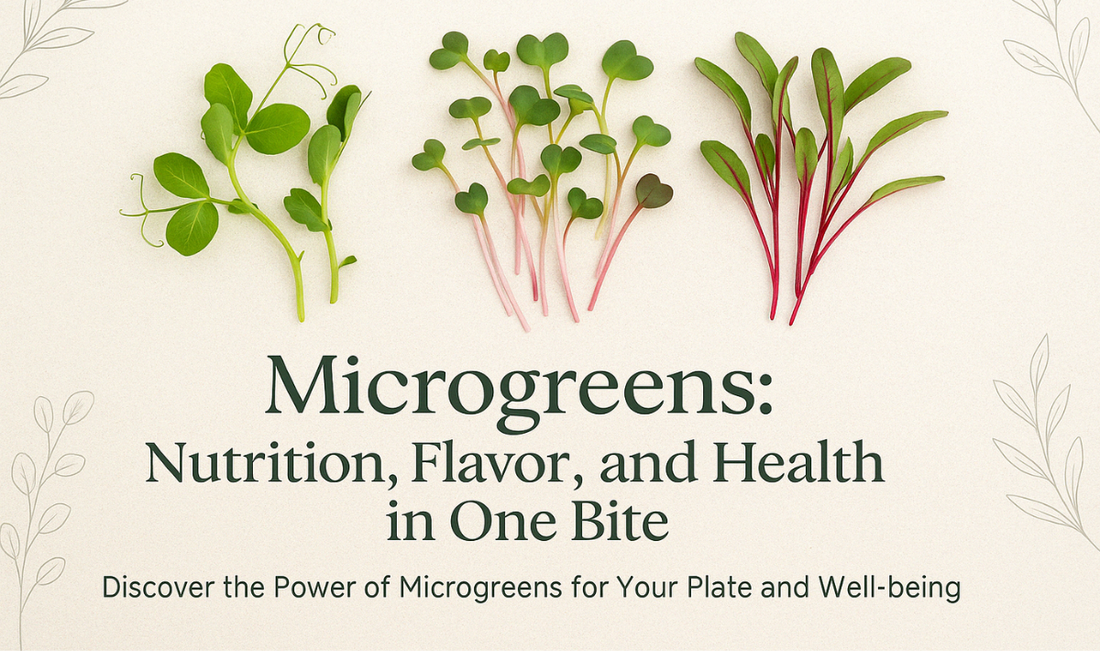
Microgreens – Small Plants with Big Potential
Microgreens are young edible plants harvested at a very early stage of growth, usually after 7–21 days from germination. Despite their small size, they are exceptionally rich in nutrients and flavor, and can be grown successfully even in urban environments. Microgreens are becoming increasingly popular in both professional and home kitchens, thanks to their health benefits and culinary versatility.
Microgreens are among the most nutrient-dense foods available. Compared to their mature counterparts, they contain:
4 to 40 times higher concentrations of vitamins such as A, C, E, and K
greater levels of minerals including potassium, calcium, iron, zinc, and magnesium
abundant antioxidants that help neutralize free radicals
high amounts of chlorophyll supporting detoxification processes
beneficial phytochemicals like polyphenols and glucosinolates
For example, red cabbage microgreens contain up to six times more vitamin C than mature cabbage, and broccoli microgreens are a rich source of sulforaphane, a compound with potential protective effects on cellular health. Thanks to such nutrient density, even a small serving of microgreens can significantly boost the nutritional value of a meal.

Flavor Characteristics
Microgreens deliver an intense and varied flavor experience. Depending on the type, they can offer notes of:
fresh sweetness (e.g., pea shoots, beet)
pronounced spiciness (e.g., radish, arugula, mustard)
rich herbal aroma (e.g., basil, cilantro, parsley)
The intense flavor is a result of concentrated natural essential oils and compounds specific to each plant. This makes microgreens a powerful way to enhance dishes naturally, often reducing the need for excessive salt or artificial seasonings.

Health Benefits
Incorporating microgreens into your diet regularly can offer multiple health benefits, driven by their bioactive compounds. Notably, microgreens may:
support the immune system with high levels of vitamin C and antioxidants,
promote cardiovascular health by helping to maintain balanced cholesterol levels and reducing oxidative stress
protect cells against damage through the action of polyphenols and carotenoids
aid digestion by contributing enzymes and fiber
offer potential anti-cancer properties – especially in microgreens like broccoli, due to sulforaphane content
While microgreens are not a cure on their own, they are a valuable component of a diverse and balanced diet.

Culinary Uses
Microgreens are highly versatile and can be used in many culinary contexts. They are excellent as:
a topping for sandwiches and wraps for added freshness and texture
an ingredient in salads – either as the base or a flavorful addition
a garnish for main dishes – enhancing both presentation and flavor
a booster for smoothies and vegetable juices, adding nutrients and vibrancy
the base for creative appetizers, such as microgreen carpaccio or amuse-bouche
Their vibrant colors and textures can elevate the visual appeal of any dish. With a wide variety of tastes and colors available, microgreens adapt well to almost every cuisine, from Mediterranean to Asian styles.
